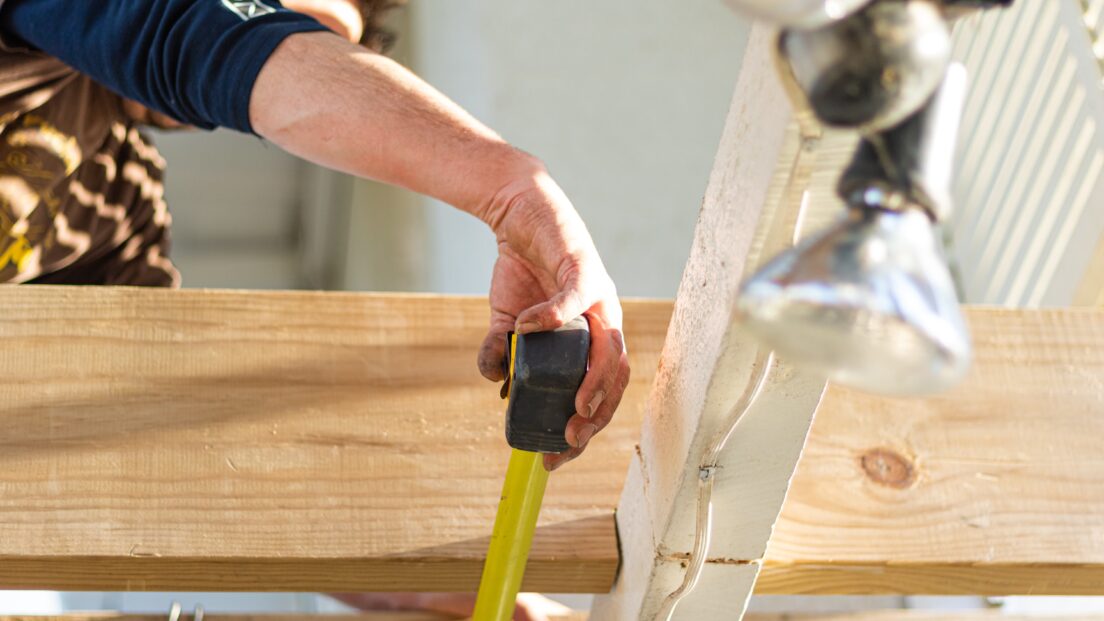New findings on the stiffness of timber structures

Multi-storey timber buildings are becoming increasingly important in Switzerland. To ensure that these structures can withstand the challenges posed by wind and earthquakes, Empa researchers are conducting practical experiments with a two-tonne shaker. The aim is to measure the stiffness and vibration behaviour of the buildings and thus improve the planning basis for the future.
Timber buildings are experiencing an upswing in Switzerland. With their sustainability and aesthetics, they are becoming increasingly popular, even for multi-storey buildings. But how can it be ensured that these structures can withstand the forces of wind and earthquakes? This is a question that occupies building researchers, especially when planning timber buildings up to 75 metres high. This is because the right bracing and supporting structures must be in place to ensure that timber buildings remain stable even under extreme conditions.
Research in this field has made considerable progress in recent years. One particularly exciting tool is the shaker, a two-tonne device that is used in Empa’s largest laboratory in Dübendorf. The shaker simulates earthquakes and strong winds by causing building models to vibrate. In this way, the vibration behaviour of the buildings is examined under real conditions and the models for calculating stiffness are refined.
The shaker in action
For the open day on 14 September 2024, the shaker will be demonstrated in Empa’s construction hall in Dübendorf. This is not just about scientific research – visitors will get a direct insight into the work of the engineers. René Steiger, Pedro Palma and Robert Widmann, structural engineers at Empa, will give an impressive demonstration of how the shaker causes a structural model to vibrate, thereby analysing the behaviour of the weight and stiffness distribution.
This research is of great importance, as ever taller timber buildings are being erected in Switzerland. While most buildings remain in the 4- to 5-storey range, projects with more than 20 storeys demonstrate the potential of timber as a building material. However, ensuring the stability of such buildings requires precise calculations and practical tests such as those carried out with the Shaker.
Complex requirements for timber construction
The challenge with multi-storey timber buildings lies not only in the load-bearing capacity of the walls, but also in the balance between rigidity and flexibility. Whilst thicker components and additional load-bearing walls are often seen as a solution, they can lead to increased costs. Sometimes it is even more favourable if a structure reacts flexibly to earthquake shocks to a certain degree. These nuances must be taken into account in the computer calculations, and this is precisely where the shaker provides valuable data from practice.
The experiments in the construction hall and on real buildings, such as in Oberglatt in the canton of Zurich, show how the supporting structure gains rigidity during various construction phases. For example, the researchers were able to observe exactly how the load-bearing capacity of the buildings changed when load-bearing walls, non-load-bearing walls and windows were installed.
Practical data for planners and architects
For a long time, planners relied on mathematical approximations to determine the dynamic properties of timber structures. These values were often based on tests from Japan and North America, but due to different building regulations and requirements, they are not readily transferable to Switzerland. This is where the work of the Empa researchers comes in: The shaker and the measurements on real buildings provide precise data on stiffness and damping that is specifically tailored to local building requirements.
This provides construction engineers and architects with reliable information to optimise their planning and use wood as a material efficiently and sustainably. The knowledge gained will help to further develop standards and guidelines and strengthen timber construction as a competitive solution for multi-storey buildings.
Wood as a building material of the future
Empa’s research results show that wood has enormous potential as a building material for multi-storey buildings. The use of the shaker provides construction engineers and architects with practical data that makes it possible to design timber buildings more safely and efficiently. By combining modern technology and scientific expertise, Empa is making a decisive contribution to advancing timber construction in Switzerland and establishing it as a sustainable alternative in the construction industry.